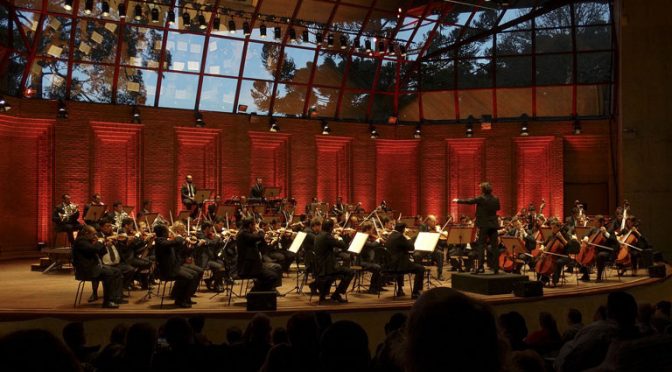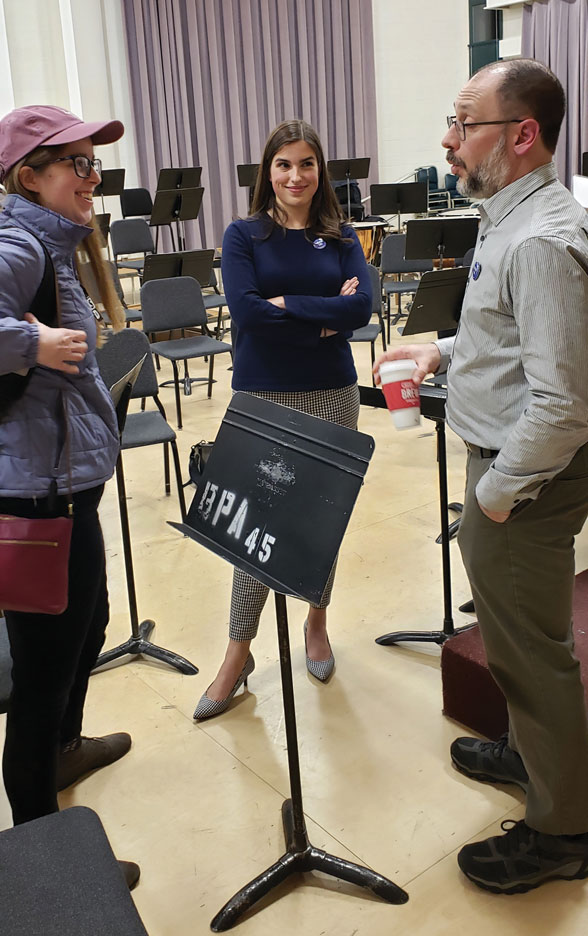Reflection, Resilience, and Rededication:
Symphonic Musicians Emerge from the COVID Period
by Rochelle Skolnick, AFM Symphonic Services Division Director
In the week I write this column, the State of California has lifted almost all COVID-19 restrictions, following most other US jurisdictions in “officially reopening.” Canada, with vaccination rates unfortunately trailing those in the US, lags behind in reopening. It appears that all US AFM jurisdictions will soon be open for performances without much in the way of COVID-related restrictions, barring resurgence of the disease driven by uncontrolled variants. We hope that Canada soon reaches the same milestone.
With many musicians returning to live performance more or less as usual, this pivotal moment affords the opportunity to reflect on the work we’ve done and consider what lies ahead. There is much to be proud of in the way we’ve collectively managed the truly unprecedented challenges of the past 15 months.
As Symphonic Services Division (SSD) Director of Symphonic Electronic Media Debbie Newmark writes, we have seen tremendous success with the framework we developed to allow streaming of content in exchange for continued compensation of musicians, even when ordinary live performance was rendered impossible due to the pandemic. That model, coupled with musicians’ great tenacity and creativity and fueled by government funds and dollars from committed donors, provided some level of compensation to most symphony, opera, and ballet musicians during a very dark period. It also spurred their institutions to cultivate new connections with audiences.
The detailed safety protocols bargained by our locals and orchestra committees were another success. As employers began to talk about bringing musicians into concert halls in small groups to record concerts for streaming, SSD issued guidance in June 2020, equipping musicians and their advocates with the tools to bargain effectively over this life-or-death situation. We urged caution, thoroughness, and reliance on the best available science. Perhaps most importantly, we stressed the importance of bringing all musicians into the conversation about making our workplaces safe from this new threat. The lengthy safety plans that grew out of these efforts worked exceedingly well: to my knowledge there has been no instance of workplace spread of COVID-19 in a symphony, opera, or ballet workplace.
We also successfully strategized about how to protect the most vulnerable among our orchestra populations while still allowing creativity to flourish. The result was one of the most stunning examples of collectivism I have ever seen. String players and percussionists who could work fully masked and distanced sometimes carried a greater share of the work—but not the compensation. This allowed wind and brass players and the immunocompromised, whose presence in the workplace was far riskier, to remain safely at home and still receive compensation. Those who stayed home engaged in alternate work, sometimes calling donors to thank them personally for their support or engaging with students remotely. Through these collective efforts, in which each musician contributed and each benefited, the creative and economic lifeblood of our institutions continued to pump.
Not all has been a success, however. There have been outliers. “Leaders” of those institutions saw fit to exploit the pandemic as an opportunity to extract concessions from musicians, rather than as a challenge to be overcome. Those employers starved out musicians with unilaterally imposed “furloughs” that look an awful lot like lockouts when coupled with bargaining demands for long-term cuts in wages and benefits. These tactics fool no one; managers and boards who sow these seeds of division ensure that their institutions will reap a toxic harvest in future bargaining cycles and for years to come.
Some of these conflicts have resolved because musicians linked arms and refused to allow their orchestras to be decimated. Other musicians remain engaged in a terrible fight with the support and empathy of their colleagues throughout the AFM and around the world.
There were also many, mostly smaller, institutions that went largely dormant during the 2020-2021 season—not because of ill intent on the part of institutional leadership but rather due to those leaders’ lack of creative vision. The musicians of these institutions, whose generally freelance livelihoods were most tenuous even before COVID, have perhaps suffered the most during the pandemic. As others have observed, COVID exposed certain vulnerabilities that already existed in our industry. Where musicians had no minimum service guarantees they were far less likely to receive any compensation when ordinary performances ceased. Such guarantees will certainly be a top priority in upcoming rounds of bargaining.
As impossible as it once seemed, from today’s perspective, we can see there will be some positive things we take with us from these past 15 months of incalculable devastation. We musicians are a resourceful, resilient bunch and many of us used the forced pause of the pandemic as an opportunity for growth. We tried out new hobbies (sourdough, anyone?), welcomed new babies and new puppies, began fitness regimens and mindfulness practices, healed overuse injuries, and (for those privileged enough not to have already lived it every day of our lives) came face-to-face in ways we never have before with the suffocating oppression of systemic racism. For some who have never known themselves as anything other than too-busy working musicians, the pandemic provided a singular opportunity to reimagine what life could be—for ourselves, for our orchestras, and for society.
Forced into isolation, we also came to appreciate with new acuity the value of collective experience and the power of collective action. Without the strength that comes from unity and the numerous protections we have achieved through collective bargaining, we would not have weathered the storm of the past 15 months with as much grace as we have. As we launch ourselves back into the regular current of our work lives, we will surely be mindful of what we carry with us and what we leave behind from the pandemic pause. Collectivism, both on stage and in our union halls and orchestra meetings, will be among the most valuable of the ideals we carry forward.

















